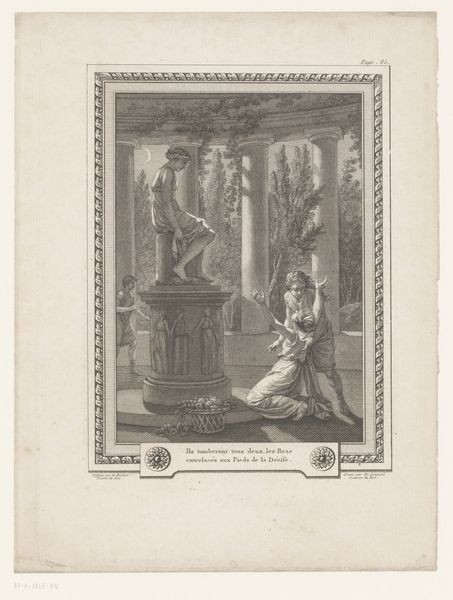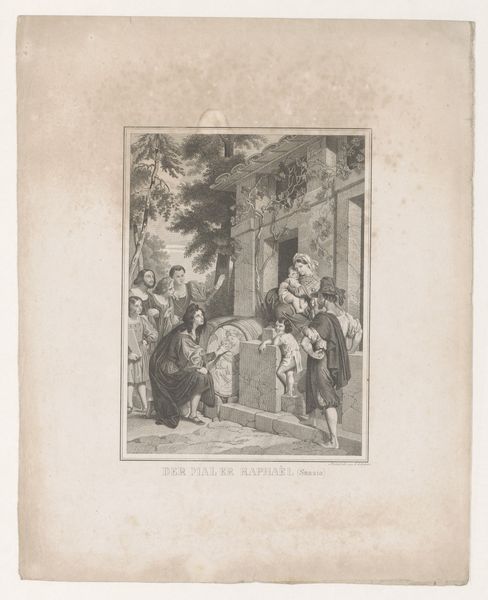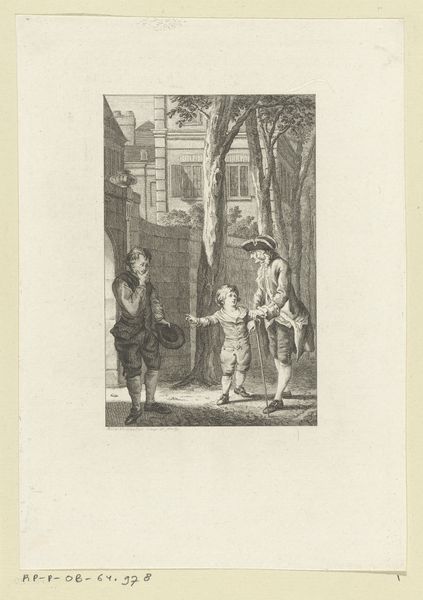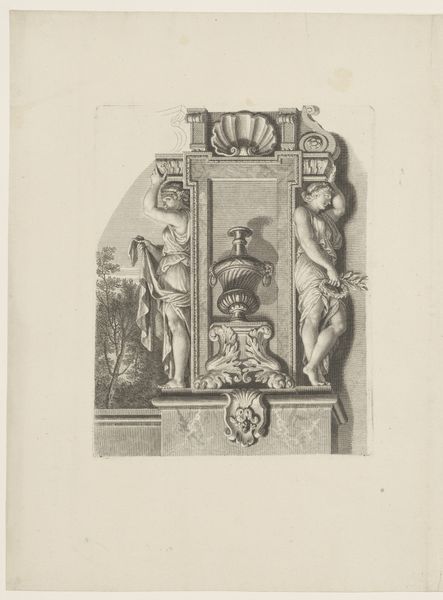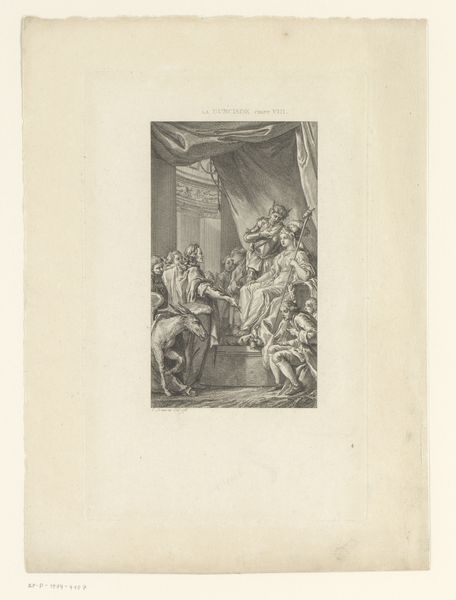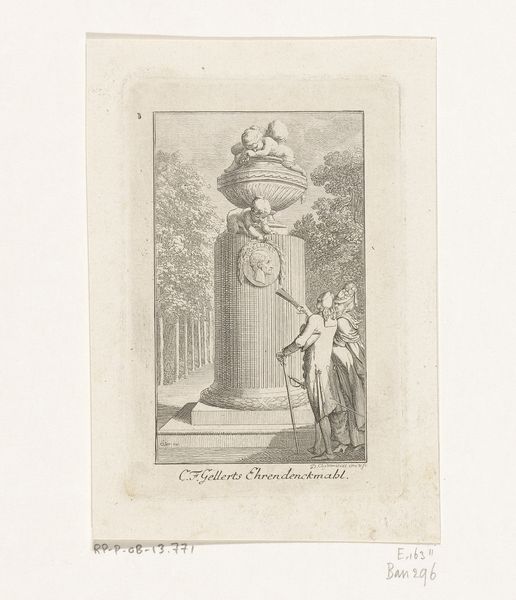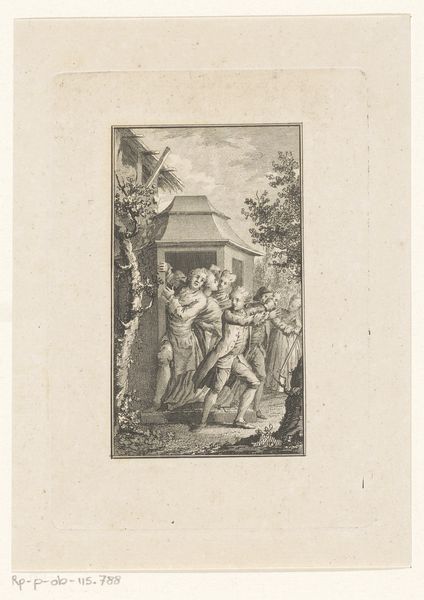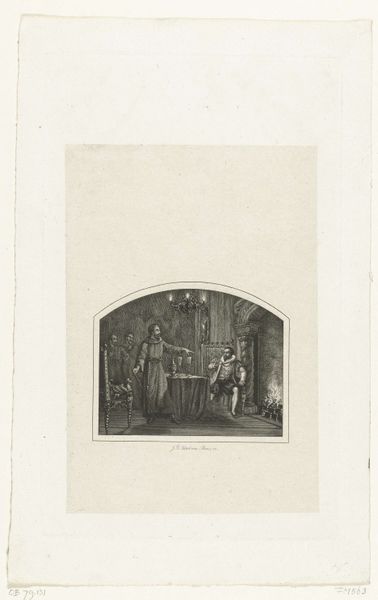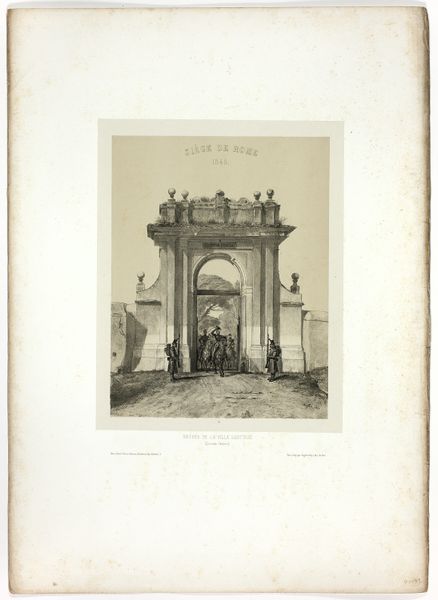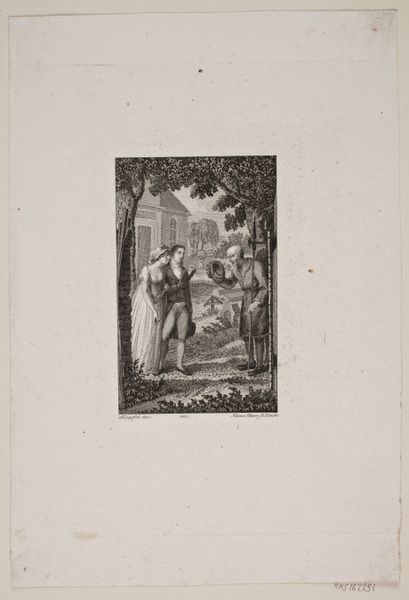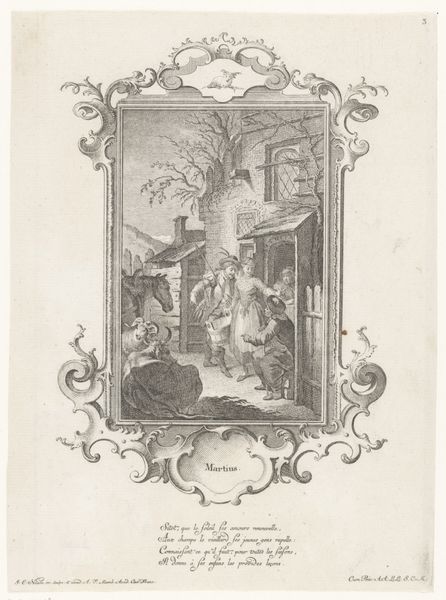
Dimensions: height 235 mm, width 218 mm
Copyright: Rijks Museum: Open Domain
Curator: This is F. Herinck's "Spelende kinderen voor de ingang naar een park," dating to 1863, an engraving printed on paper. Editor: My first thought? A stage. The gateway feels like a proscenium arch, framing this brief burst of childhood chaos. There's a dreamlike quality, wouldn't you say? Curator: Indeed, but let’s consider the material conditions. The engraving process itself necessitates a careful, methodical labor. It suggests a world increasingly reliant on reproducible imagery, of which prints were a crucial component in the 19th Century. It allowed for a wide distribution. Editor: True, there’s a craft to it. But what captures me is how Herinck renders that ephemeral energy of children playing, even with a stiff, demanding medium. Did he see this often, do you think? Those fleeting moments? Curator: Possibly. Genre scenes like these had a market; depictions of everyday life allowed burgeoning bourgeois audiences to reflect upon themselves. And parks themselves, gaining in prominence during this time, reflected changing attitudes toward public space and recreation. The print speaks to that social dynamic, doesn't it? Editor: Certainly. It's more than just kids larking about. There’s the contrast between the neoclassical sculptures—symbols of idealized, frozen grandeur—and the messy, imperfect reality of youth. The adult figures, standing watch, emphasize that divide too. A nice counterpoint. Curator: And notice the architectural rendering, indicative of neoclassicism, a conscious effort to connect with antiquity as a legitimization tactic during state building in post-Napoleonic Europe. Also, let us reflect that engravings are also an implicit form of capitalism through sale of product, each reproduction offering the artist an additional fractional value. Editor: A little cynical perhaps. Art for the marketplace, yes, but it is lovely. Even just now thinking, that quality... That balance makes it quite alive. Curator: I agree! A fine specimen for deeper inspection and thoughtful contemplation of life during that period. Editor: Absolutely, it is evocative isn't it? And full of story, I would suggest, ripe for pondering!
Comments
No comments
Be the first to comment and join the conversation on the ultimate creative platform.
